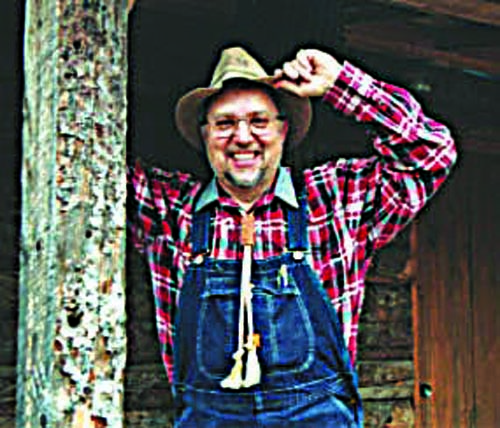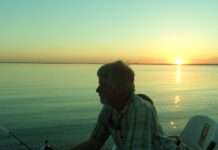Now’s the time of the year when farmers and ranchers in the Flint Hills burn their native tallgrass rangelands.
It’s a necessary smoky task because fire as a necessity if the prairies are to remain productive. Done correctly and timely, the annual burn kills invasive trees like the eastern redcedar and other undesirables like sumac and buckbrush.
The prairies respond to fire by immediately growing back tender green shoots of grasses and forbs that cattle eat like candy and gain weight like crazy. Native Americans knew the value of fire, too, and burned areas near their camps to entice the buffalo to come and graze. Green grass wuz like Door Dash — bringing food to their door.
And, when enuf mature eastern redcedars are burned and killed, rather rapidly the native tall grasses return and the natural springs start running again. Cedar trees are nasty water wasters. The huge wildfire in northern Oklahoma and southern Kansas a couple of decades ago are living testimonial to the restorative value of fire.
Prairie fires can be easy or hard, simple or downright deadly, as recent fires across the Great Plains have demonstrated. Wildfires are terribly hard to control, and dangerous. By contrast, controlled fires, done correctly, have good crew, appropriate equipment, and the crew follows a comprehensive plan.
However, like everything else in life, prairie fires can be humorous, too. Here’s a Flint Hills’ fire story that yields a great mental home video.
The setting wuz Chase County in the middle of the Flint Hills. It wuz in the days before drip torches were being used to start fires. Just plain ol’ sulfur matches were mostly used for fire starters.
The fire crew wuz a motley bunch, who ranged from bowlegged old cowboys with decades of experience with prairie fires, down to young, boisterous whipper-snappers eager to earn their stripes. There were folks in pickup trucks with water tanks and pumps, on tractors with blades and front-end loaders, and a few on horseback.
Several smaller pastures had already been burned and the young’uns were getting impatient. So, one of the rowdy young bucks a horseback volunteered to start the burn in a novel way from his horse. The crew said, “Well, have at it!”
So, the lad retrieved a worn out rubber tire from a pickup, tied a wire around it, tied his rope to the wire, dripped some oil on the tire, and set it on fire.
When the tire wuz burning, the rambunctious rider hopped on his horse, gave a loud “yee-haw,” applied the spurs, and headed off at a gallop along the fence where the plan wuz to start the fire line.
The beginning wuz good. The tire dragging along behind the horse wuz starting the fire line picture perfect. But, then the whole she-bang went haywire. As the horse and rider headed downhill on the first steep slope, the tire got to rolling on its tread and picking up speed. It quickly came hard on the heels of the horse and that started a prairie-fire train wreck.
The horse shied and bucked to evade the burning tire and shed its young rider into the rocks, then headed off pell-mell — erratically zig-zagging around the pasture, spreading fire willy-nilly with every bounce.
The rider quickly put himself safely upwind of the fire and dejectedly headed on foot back to the start, where he knew full well what wuz coming. As he drifted head down into the crowd, he wuz met with every sort of Bronx cheer. “Sure ‘nuf getting the fire started.” “Great idea. You need to patent it.” “What’s your horse’s name again, Flame?” And, so on.
The fire ended up just fine. The crew changed plans and easily contained it. The horse returned unhurt, but with no tire attached.
I guess it wuz examples like this story that brought about the drip torch.
***
Last evening Nevah and I watched the 100th anniversary of the Grand Ole Opry on TV. It wuz a great three-hour show because we both love country/western music.
Current artists saluted Country Hall of Fame members, past and present, by singing the hall of famers’ biggest and most memorable hits. Parts of the show got downright emotional for me and brought a tear to my eye, especially the part involving Randy Travis. Plus, with most country/western songs you can understand the lyrics and they usually tell a story of some kind. That gets a big thumbs-up from me.
The only thing about the anniversary Opry show that I would fault is that not a word wuz mentioned about Mighty Merle Haggard. Seriously, how could he be left out? He’s my all-time favorite C/W singer.
***
I need to explain a needed correction from last week’s column about drilling into the Earth’s hot core to generate electricity. I wrote that the hole needs to be dug with lasers down 12-13 miles.
I should have written twelve to thirteen miles, because when 12-13 miles appeared on paper, the hyphen disappeared and it came out 1213 miles. That’s a difference of about 1200 miles, and it way deeper than the new drilling method can go. Sorry ’bout that.
***
Personal words of wisdom for this week: “Time reveals all and heals all, but it usually behind leaves a scar or scab.”



